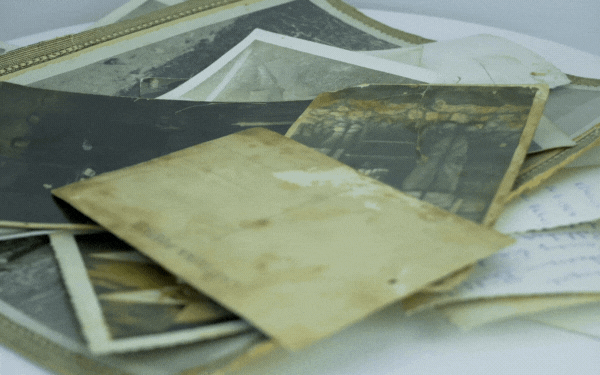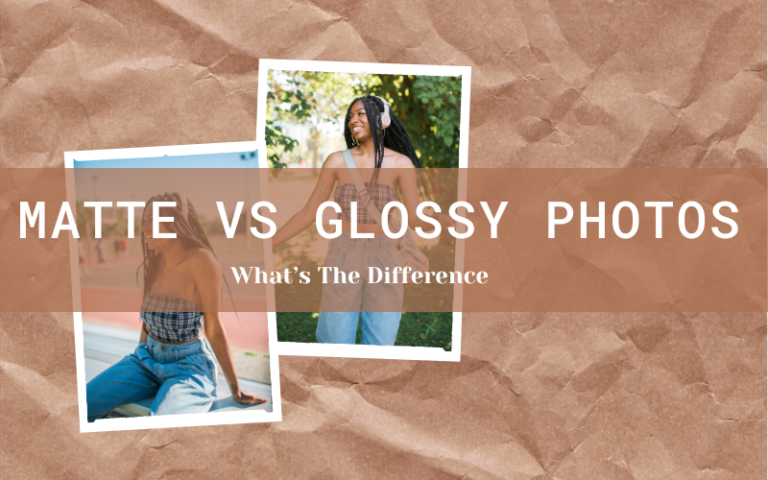Matte photographs and glossy photographs are the talks of the studio. How often do you come across these questions about whether to choose glossy or matte for your photographs or wall art? It is normal to be perplexed by this query.
It is common knowledge that photos can be printed, and their quality differs with style. So, what exactly are these two photos? Let us pounce on the battle, Matte vs. Glossy photos: What’s The Difference & Which One Is The Best?
Glossy Or Matte?

Paper
Every picture that has been clicked can be printed on various papers and by using a wide category of ink cartridges. The papers with some amount of a smoothened lacquer surface are used for glossy photos. These photos are shiny. Light reflects off the photo and makes its contents look more vibrant. The spotless nature of glossy photos makes them popular.
Glossy photos, however, tend to be slightly sticky. This gloss is why if a glossy photo remains attached to another shiny surface, it often leads to distortion of the colors. The colors act as an adhesive and are stripped off the original paper they were printed on. This residue damages the photograph largely.
There are many grades of a glossy finish in photos. You may go all out with the reflective nature or opt for a semi-glossy finish. A semi-glossy finish is always a good solution if you do not wish to have your photo seem like it is covered in transparent resin or silicone. Such a finish will bring out the vibrancy in colors, especially the brighter ones. It acts like a saturation filter in real life.
What works?
Glossy photos do not work well with glass frames. Let us assume that you wish to display your photograph on the wall. To do this, you will first have to purchase a fine shiny glass that will protect your photograph. In such a scenario, You may not want to go for a glossy photograph.
This suggestion is because the light rays will seem streaky and will garner the interest of its viewers instead of the photograph itself. Overall, despite the stunning gloss it gives, your photograph will metaphorically be dull.
Another strategic decision is for which photo categories should be chosen for glossy photos. As stated previously, you must realize that the colors with higher hues shine a lot. It leads to the understanding that if your photograph is not of a grayscale color combination, it is ideal to go for a glossy finish. It is not a thumb rule, however.
If you feel that going for a matte finish will be in dire support of the photo’s true artistic nature, you may trust your gut.
Matte Photos

Understanding Matte
So what are matte photos? They are offset photos. Such photos will not retain the shiny nature of glossy photos. Instead, they tend to be of a chalky, papery touch. They inherently do not reflect much light.
It renders light rays from bright light sources significantly ineffective. Do not misunderstand the minimized reflection of light rays. It implies that there will be a lesser chance of streaks formation from direct light.
A matte photo seems softer compared to a glossy finish. The colors are not that stark, so the photo seems decently smoothened. Such photos are printed on uneven paper. This characteristic of the paper quality ensures that when light rays fall on the paper, it gets scattered such that it seems unaffected.
Use of Matte
Matte prints can be used for grayscale images or for images with darker or duller tones. It provides a more vintage and classic look to the photograph. The quality surely seems high, especially for black and similar shades. A matte finish gives it an unpolished leather sensation.
There is no restriction that colored images cannot be printed in a matte finish. It is usually the case where colored pictures are printed in a matte-styled photograph. It is useful when it is to be put up on a wall. The glass case or frame provided brings every color to its natural state.
Combining a glass frame and a matte photograph brings the best of both worlds. When photographs are matte, they not only seem sleeker but do not stick to the glass pane in which it has been framed.
Matted photos are not sticky, unlike glossy photos. This basis of distinction is critical when the photograph is to be handled with fingers. On glossy photos, fingerprints tend to remain and thus spoil the image. In the case of matte, it has a powdery feel to it which is why the photo is protected from fingerprints to a great extent.
As foreshadowed earlier, the matte finish’s smoothness looks classic. However, if the photograph is a vector image or an illustration of a graphic, which requires a great deal of sharpness and clarity to look attractive, it is needless to say that a matte finish will ruin it. In such cases, glossy photos always rule.
Conclusion

It is not easy to choose a clear winner here. Both types of photo finishes have their benefits. The price of Matte photos might be higher as premium matte papers can be more expensive than glossy papers.
It is because more ink is needed to get the same color saturation on matte papers. However, it is clear that the matte images will have a richer touch. Hence, the best choice here would be Matte Photos.
Read also: Should You Tip a Photographer & How Much?
Frequently Asked Questions
Do professional photographers use matte or glossy?
Professionals usually go with a matte finish as it does not reflect light.
Should art prints be glossy or matte?
Glossy photos are better for art prints as they need more detail. However, for sketches, you may as well go with matte photos.
Can you use matte photo paper for invitations?
A Matte paper is useful for invitations as they are generally held in hands. A Glossy finish will retain any fingerprints and thus spoil the overall look of it.

